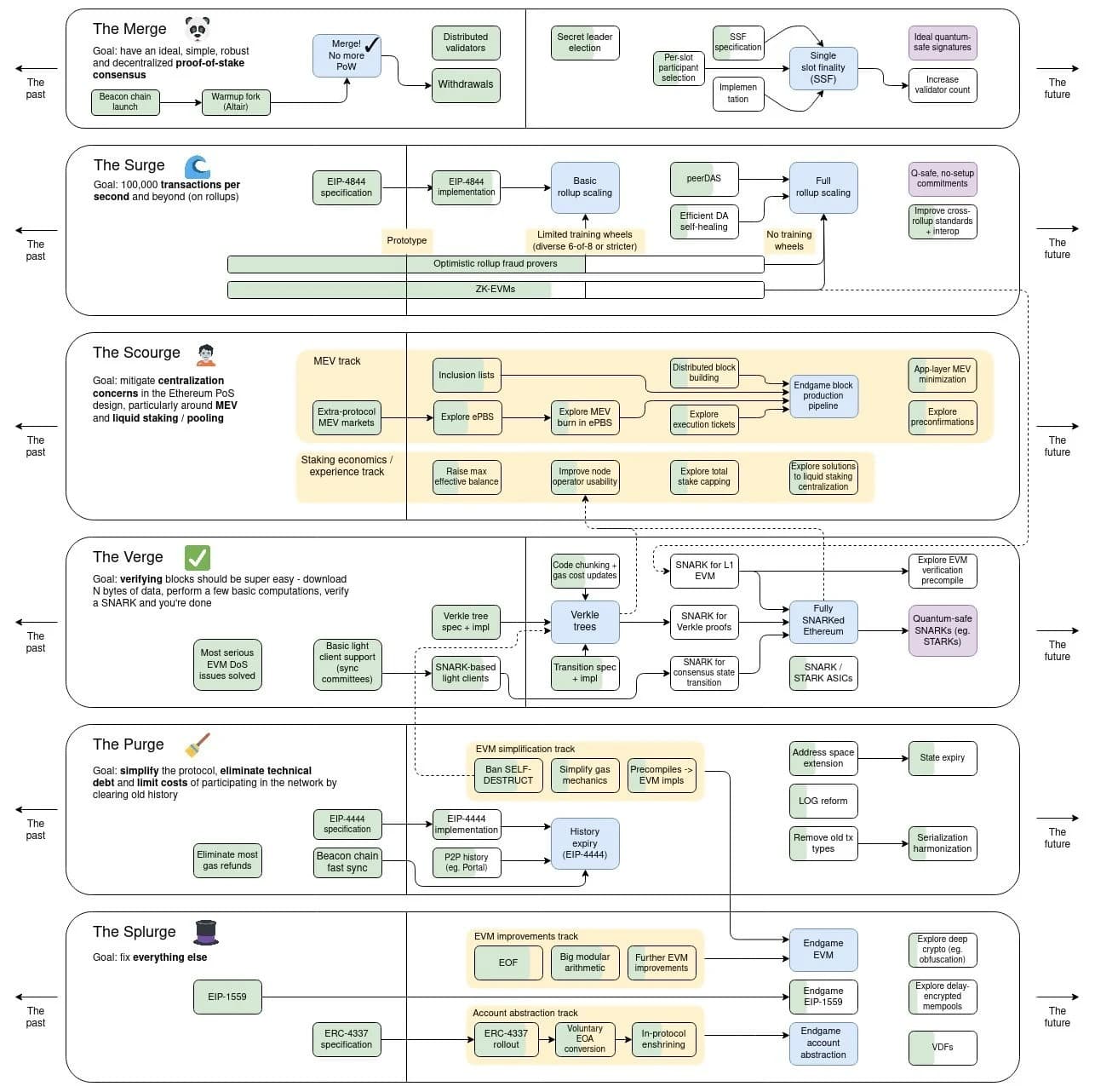Ethereum Roadmap Targets 10 Million Transactions Per Second with Ambitious Upgrades

Ethereum is charting an ambitious course for its technological future, aiming to significantly enhance scalability, security, and user experience over the next five years. A recent deep dive by Evan 🦇🔊 on social media highlighted key upgrades across the network's Consensus, Data, and Execution Layers, with a bold target of 10 million transactions per second (TPS).
"Read my deep dive on Ethereum's technology roadmap over the next ~5 year time horizon," Evan stated, outlining a comprehensive plan for the blockchain's evolution. The roadmap includes critical advancements designed to solidify Ethereum's position as a leading decentralized platform.
Upgrades to the Consensus Layer are set to introduce Single Slot Finality (SSF), which aims to reduce block finalization time from approximately 15 minutes to within a single slot, significantly boosting efficiency. While SSF is still in the research phase, it promises to make block validation more robust and difficult to attack. Other planned improvements for this layer include Single Secret Leader Election (SSLE) and Preconfirmations, which will further enhance the network's security and consensus mechanism.
The Data Layer is slated for a major overhaul with the implementation of PeerDAS, a crucial component for achieving the projected 10 million TPS. PeerDAS, which is intrinsically linked to Danksharding, will enable the network to process vast amounts of data from Layer 2 rollups more efficiently by utilizing "blobs" of data rather than storing all transaction data permanently on the mainnet. This approach is expected to drastically reduce transaction costs and increase throughput.
On the Execution Layer, the roadmap details advancements such as Stateless Verification, which will be facilitated by Verkle Trees, allowing nodes to verify new blocks with minimal data storage. This will make running a node more accessible and contribute to decentralization. The integration of Validity Proofs, zkVMs (zero-knowledge Virtual Machines), and Native Rollups are also central to this layer's development, aiming to provide more secure, private, and scalable execution environments for decentralized applications. The proliferation of Layer 2 solutions, while offering scalability, has also sparked debates regarding their security and decentralization, with some critics questioning if they truly inherit Ethereum's full security guarantees.